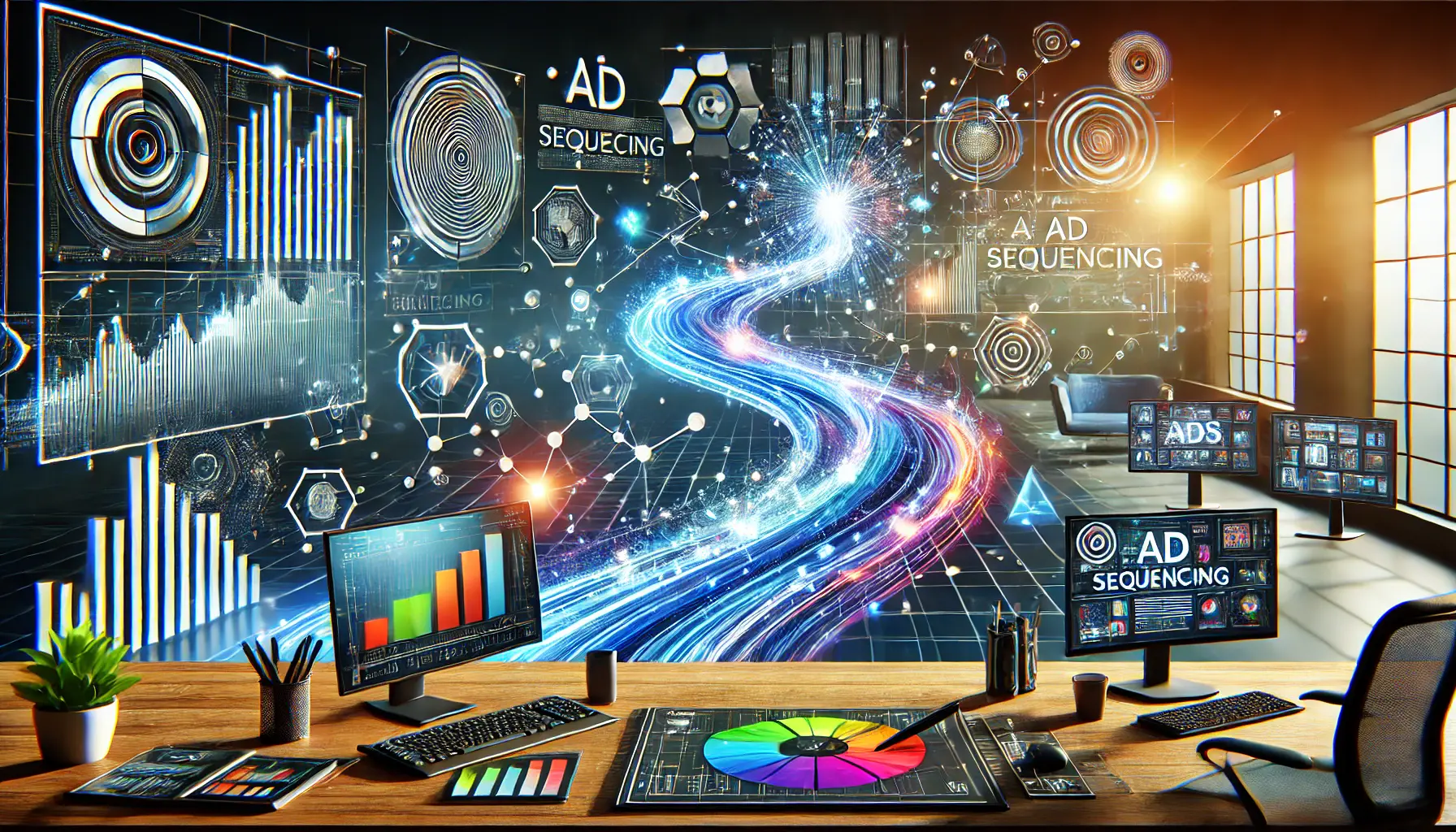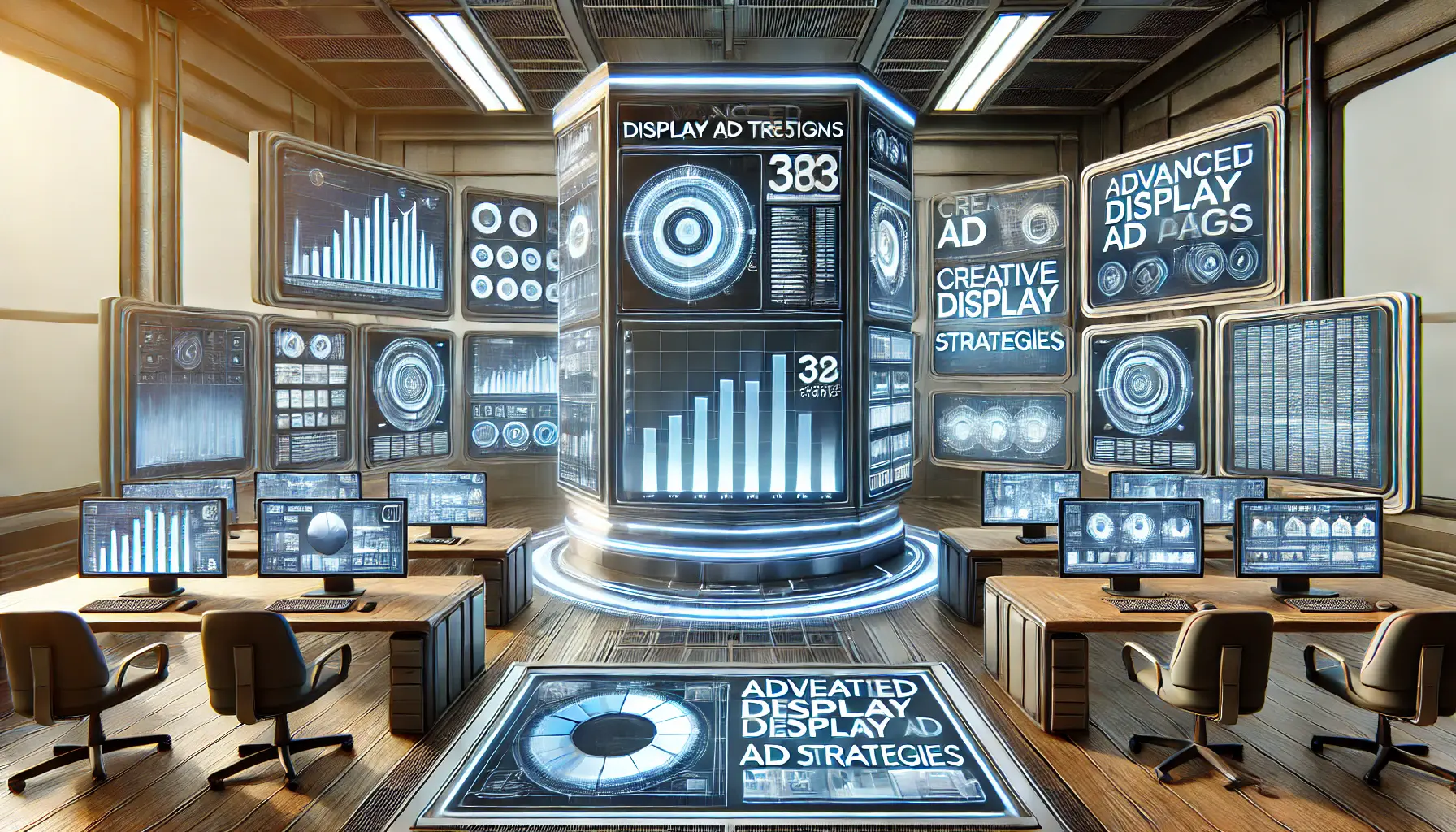With the competition heating up in the online arena these days, captivating and retaining the interest of your audience is easier said than done.
The old ways of advertisement lack punch, leading to ad fatigueA phenomenon where users become less responsive to ads due to repeated exposure. and disengagement.
Sequential messaging is where it’s different—a system that not only shows a strong story but leads your audience through a personalized experience, making them more engaged and converting at a higher rate.
- Understanding Sequential Messaging in LinkedIn Ads
- Creating Effective Sequential Messaging Campaigns
- Maximizing Engagement through Creative Content and Design
- Utilizing Analytics for Sustained Enhancement
- Overcoming the Challenges in Sequential Messaging Campaigns
- Mastering Sequential Messaging for LinkedIn Success
- Frequently Asked Questions Regarding Sequential Messaging in LinkedIn Ads
Understanding Sequential Messaging in LinkedIn Ads
Sequential messaging is an advertising tactic where multiple ads are presented to the same audience in a specific order, each building on the previous one to create a cohesiveForming a unified whole, ensuring elements are well-connected and consistent. story.
This is an extremely powerful technique on LinkedIn, where professionals seek relevant and valuable content.
By using sequential messaging in your LinkedIn Ads, you can:
- Increase Engagement: Storytelling across touchpoints engages your audience and encourages more interaction with your content.
- Make Brands More Memorable: A well-constructed sequence makes your brand message more memorable.
- Ease Decision-Making: Delivering information in phases enables prospects to make informed decisions, progressing down the marketing funnel effectively.
For instance, the first ad can present a challenge your target audience is experiencing, the second ad shows a solution, and the following ads feature testimonials or case studies, leading to a solid call-to-action.
Sequential messaging needs to be well-planned and understood in terms of your audience’s journey.
It’s not merely displaying multiple ads but creating a series that resonates and gains trust over time.
Sequential messaging creates a structured advertising journey, increasing engagement and trust over time.
Creating Effective Sequential Messaging Campaigns
It takes a successful sequential messaging campaign on LinkedIn to have a good plan and a deep understanding of your target audience.
Let us find out the key steps to an effective plan.
Segment Your Target Audience
Begin by determining who you want to target.
Think in terms of job function, industry, company size, and professional interests.
LinkedIn’s targeting features allow you to effectively reach your ideal audience.
By targeting your audience precisely, you can organize your messages to address particular needs and interests, making your sequential messaging more compelling and relevant.
Develop a Compelling Content Roadmap
Having defined your audience, chart the course you’d like them to take.
Create a series of messages that build upon each other, moving your audience from awareness to consideration and, ultimately, to decision-making.
Each message should provide value and encourage the audience to take the next step.
An example sequence is:
- Message 1: Share a common problem your audience is facing.
- Message 2: Present a solution to that challenge.
- Message 3: Share a case study or testimonial showcasing the solution’s effectiveness.
- Message 4: Provide a clear call-to-action, such as signing up for a demo or downloading a whitepaper.
This structured approach ensures your sequential messaging resonates with your audience at each stage of their decision-making process.
Incorporate Storytelling Techniques in Ads
People connect with narratives.
Incorporating storytelling elements into your marketing makes your ads more relatable and memorable.
Use these techniques:
- Character Development: Describe characters who represent your target audience, so they can envision themselves within the narrative.
- Conflict and Resolution: Highlight a problem (conflict) and illustrate how your product or service resolves it (resolution).
- Emotional Appeal: Tap into emotions that resonate with audiences, such as ambition, frustration, or hope.
By using these storytelling strategies, your sequential messaging becomes more engaging and has a higher probability of capturing audience attention and driving conversions.
A well-planned sequence should guide the audience from problem awareness to decision-making, ensuring each ad builds on the previous one.
Maximizing Engagement through Creative Content and Design
In sequential messaging, it is most important to create stunning LinkedIn ads to catch your audience’s attention and trigger engagement.
Let us look at how to maximize the impact of your ad.
Creating Visually Engaging LinkedIn Ads
The visuals in your ad are the first elements noticed by users.
To make a lasting impression:
- Use High-Quality Images: Ensure that your images are sharp, professional, and relevant to your message. High-quality visuals convey credibility and draw attention.
- Use Bold Colors: Utilize bold colors that stand out against LinkedIn’s predominantly blue and white background. Bold hues make your ad more eye-catching.
- Maintain Brand Consistency: Align your ad’s visual look with your brand’s identity, including logos, fonts, and color schemes, to maximize brand recognition.
- Employ Video Content: Video content is more engaging than static imagery, providing active storytelling potential.
Crafting Effective and Persuasive Ad Copy
Excellent copy is paramount in communicating successfully.
Keep these principles in mind:
- Write Brief Headlines: Use headings of fewer than 150 characters to ensure full visibility and impact.
- Highlight Value Points: Showcase how your product or service solves a problem or adds value to the reader.
- Utilize Strong Calls-to-Action (CTAs): Encourage users to take action quickly with direct, forceful CTAs such as “Download Now” or “Get Started.”
- Make It Personal: Address the reader directly to build rapport and personalize the message.
Utilizing Multimedia Elements for Increased Engagement
Embedding various media forms can make your sequential messaging advertisements more interactive:
- Carousel Ads: Use multiple images or cards to tell a story or showcase different product features, encouraging users to engage by swiping through.
- Interactive Content: Incorporate elements such as polls or quizzes to engage users actively.
- Infographics: Present complex information in an easily consumable visual format to capture attention and convey your message effectively.
By thoughtfully combining these content and design tactics, your sequential messaging campaigns on LinkedIn can receive more engagement and drive desired actions from your target audience.
Using high-quality visuals and compelling ad copy is key to capturing audience attention and driving interaction.
Utilizing Analytics for Sustained Enhancement
With the ever-evolving environment of sequential messaging in LinkedIn Ads, utilizing analytics is necessary for sustained improvement.
By closely tracking key performance indicators (KPIs), receiving audience feedback, and adjusting strategies based on data analysis, you can optimize your campaigns for maximum effectiveness.
Tracking Key Performance Indicators (KPIs)
Regularly tracking KPIs provides insight into the effectiveness of your campaign.
Focus on the following metrics:
- Click-Through Rate (CTR): A positive CTR indicates that your ads are resonating with your audience. LinkedIn considers 0.45% CTR as a benchmark for Sponsored Content; aim to meet or exceed this percentage.
- Conversion Rate: This measures the percentage of users who take a desired action after clicking on your ad, reflecting the campaign’s success in generating valuable engagements.
- Cost Per Click (CPC): Monitoring CPC ensures you stay within budget without overspending on each interaction.
- Audience Penetration: This metric shows the percentage of your target audience who have viewed your ads, providing insight into your campaign’s reach.
Consistently monitoring these KPIs enables informed, data-driven decision-making to fine-tune your sequential messaging strategy.
Gathering and Interpreting Audience Feedback
Understanding how your audience responds is key to maximizing your campaigns.
Experiment with the following approaches:
- Engagement Metrics: Track likes, shares, comments, and other engagement indicators to assess content relevance and popularity.
- Direct Feedback: Request feedback from users through surveys or polls, offering qualitative data on their preferences and experiences.
- A/B Testing: Implement A/B testing by running multiple variations of ads with single-variable modifications to determine what performs best.
By combining quantitative data with qualitative insights, you can gain a holistic understanding of your audience’s needs and perceptions.
Adjusting Strategies Based on Data Insights
Using insights derived from analytics and feedback, make changes to your sequential messaging campaigns to enhance performance:
- Refine Targeting: Use data to refine your audience segments, ensuring your ads are seen by the most responsive individuals. For example, excluding particular job titles can prevent your ads from being shown to individuals who are unlikely to convert.
- Optimize Ad Creative: Refresh visuals and copy based on engagement signals to better align with audience interests.
- Budget Allocation: Allocate budget to the highest-performing ads or audience segments to optimize return on ad spend.
- Bid Strategies: Experiment with different bidding strategies, such as manual bidding, to control costs and optimize ad delivery.
By embracing a mindset of continuous improvement and leveraging data-driven intelligence, your sequential messaging campaigns on LinkedIn can achieve steady success and adaptability in a constantly shifting digital landscape.
Tracking key performance indicators (KPIs) such as CTR, conversion rateThe percentage of users who take a desired action after interacting with an ad., and audience penetration allows for data-driven campaign improvements.
Overcoming the Challenges in Sequential Messaging Campaigns
Implementing sequential messaging in LinkedIn Ads has numerous benefits, but it also poses some challenges.
Recognizing and overcoming these challenges is essential for the success of your campaigns.
Maintaining Audience Interest Throughout the Sequence
Keeping your audience engaged throughout a series of messages can be difficult.
To overcome this:
- Tell a Compelling Story: Create a narrative that resonates with your audience and encourages them to follow through each stage. Understanding who your audience is and how they interact with content is key to writing engaging sequential messaging campaigns.
- Keep it Relevant and Valuable: Each message should provide valuable and relevant information that aligns with the audience’s interests to maintain engagement.
- Use Multiple Formats: Utilize a combination of various content types such as videos, infographics, and articles to cater to different preferences and keep the campaign engaging.
Avoiding Ad Fatigue and Overexposure
Ad fatigue occurs when the same or very similar ads are repeatedly displayed to the same audience, reducing campaign effectiveness.
To prevent this:
- Vary Ad Content: Rotate ad creatives and messaging to ensure fresh and engaging content delivery.
- Control Frequency: Monitor and adjust the frequency of ads to avoid overwhelming your audience.
- Implement User Feedback: Pay close attention to audience responses and adjust strategies accordingly to maintain engagement.
Maintaining Cohesiveness Across Platforms
Consistency in messaging across platforms is crucial for reinforcing brand identity.
To achieve this:
- Establish a Unified Strategy: Ensure that messaging remains consistent across all platforms, providing a seamless experience for your audience.
- Tailor Content by Platform: Customize messages to fit the nature and behavior of each platform while maintaining the core message.
- Take Advantage of Cross-Platform Measurement: Monitor performance metrics across platforms to ensure unity and identify areas for improvement.
Adjusting to Platform Specifics
Each platform comes with its own set of norms and user expectations.
It is crucial to adapt your sequential messaging approach to these specifics for success.
Overcoming these challenges requires strategic planning, continuous learning, and adaptability.
By doing so, you can craft a sequential messaging campaign that not only captures attention but also drives meaningful engagement and results.
Ad fatigue and disengagement can occur if the sequence lacks variety—rotating ad content and formats is crucial.
Mastering Sequential Messaging for LinkedIn Success
Sequential messaging has been a game-changer for LinkedIn Ads, enabling brands to craft structured stories that guide audiences through a carefully designed experience.
When executed correctly, this strategy not only enhances engagement but also boosts brand awareness and generates more conversions.
As we conclude, let’s recap the main insights from this article and identify the key takeaways for a successful sequential messaging campaign.
The Power of Sequential Messaging in LinkedIn Ads
The foundation of sequential messaging lies in delivering a series of ads that complement one another and build a cohesive and compelling story.
This approach helps brands interact with their consumers in a more organized and personalized manner.
The benefits include:
- Improved Engagement: A well-crafted sequence holds the user’s attention and encourages ongoing interaction.
- Enhanced Brand Recall: Repetition in storytelling strengthens the impact of your brand message.
- Better Lead Nurturing: A structured content flow helps move prospects from awareness to conversion.
Primary Strategies for Effective Sequential Messaging
Marketers should strategically plan each step in the sequence for an effective sequential messaging campaign.
The primary strategies that should be incorporated are:
- Audience Segmentation: Targeting the right audience ensures your messages are relevant and impactful.
- Content Roadmap Development: Structuring your ads in a narrative sequence—from problem awareness to solution offering—keeps users engaged.
- Visual and Copy Optimization: Utilizing high-quality images, engaging videos, and persuasive copy strengthens audience interaction.
- Data-Driven Adjustments: Monitoring key performance indicators (KPIs) allows for continuous campaign optimization.
Challenges and Solutions to Overcome Them
While sequential messaging is immensely powerful, marketers may also face some challenges.
Common obstacles and solutions include:
- Sustaining Audience Interest: Engaging storytelling and valuable information help maintain audience attention.
- Avoiding Ad Fatigue: Creative rotation, frequency capping, and incorporating user feedback ensure content remains fresh and relevant.
- Maintaining Cross-Platform Continuity: Consistent messaging across LinkedIn and other marketing channels strengthens brand identity.
- Being Responsive to Platform Distinctions: Customizing ads to align with LinkedIn user behaviors improves performance.
Final Thoughts: Taking Your LinkedIn Ad Strategy to the Next Level
Success in LinkedIn Ads relies on the ability to create compelling, structured, and adaptive campaigns.
By implementing a clearly defined sequential messaging strategy, you can drive more engagement, build credibility, and ultimately boost conversions.
It’s all about continuous learning, making data-informed decisions, and staying agile in the face of an ever-evolving digital advertising landscape.
Now is the time to optimize your strategy and maximize the use of sequential messaging to enhance your LinkedIn Ads performance.
Start structuring your campaigns with a clear message sequence, compelling content, and precise audience targeting, and watch your results grow exponentially.
Structured storytelling combined with precise audience targeting creates a powerful LinkedIn ad strategy.
Enjoyed the article? Let its author handle your social media ads. Visit our service page to get started!
Frequently Asked Questions Regarding Sequential Messaging in LinkedIn Ads
Learning about sequential messaging in LinkedIn Ads has a lot to offer your ad strategy.
Here are some common questions to help guide you:
Sequential messaging is the process of showing a sequence of ads to the same group of people in a specific order, developing a unified thread that moves them through the buying process.
It enhances engagement by serving personalized content at each step, boosts brand recallThe ability of consumers to remember a brand when thinking of a product category. by ensuring consistency in storytelling, and nurtures leads effectively, leading to improved conversions.
LinkedIn does not have an in-house ad sequencing system, but you can manually schedule and arrange your ads to create a structured experience for users.
Blending various formats—such as informative text, engaging videos, and compelling testimonials—keeps viewers interested and caters to different audience preferences.












